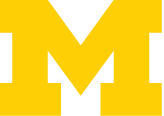

|
Medical Gross Anatomy |
| Bone | Structure | Description | Notes |
|---|---|---|---|
| rib | the bone forming the lateral thoracic wall | 12 pairs; several types are described: typical or "true" ribs, "false" ribs, "floating" ribs; all three types of ribs have many features in common: head, neck, tubercle, angle, body, costal groove | |
| head | posteromedial end of the rib | it articulates with demifacets of two adjacent vertebral bodies | |
| neck | the constricted region lateral to the head of the rib | the neck of the rib is located between the head and the tubercle | |
| tubercle | a projection located posteroinferior and lateral to the neck of the rib | it articulates with the transverse process of a vertebra | |
| body | the shaft of the rib | the body is the longest part of a typical rib | |
| angle | the marked angulation of the body located just lateral to the tubercle | the angle of the rib is its most posterior part | |
| costal groove | the groove on the inner surface of the inferior border of the body of the rib | it accommodates the intercostal neurovascular bundle; the costal groove provides a protective function for the intercostal neurovascular bundle, | |
| ribs 1-7 | "true" ribs - those which attach directly to the sternum | true ribs actually attach to the sternum by means of a costal cartilage and a true synovial joint | |
| rib 1 | the most cephalic rib | it is the broadest, shortest and widest of the ribs; the scalene tubercle marks its superior surface and is an elevation between grooves for the subclavian vein & artery; the scalene tubercle is the attachment site of the scalenus anterior m. | |
| rib 2 | the rib attached to the 1st and 2nd thoracic vertebrae | it articulates via a costal cartilage with the sternum at the level of the sternal angle; its superior surface is roughened by the attachments of the scalene mm. | |
| rib 8-10 | "false" ribs | they articulate via costal cartilages with the costal cartilage of rib 7 | |
| rib 11-12 | "floating" ribs | the anterior ends of these ribs do not articulate with the sternum or the costal cartilage of the rib above; their costal cartilages are short and end in the muscle of the posterolateral abdominal wall | |
| sternum | the broad flat bone forming the anterior thoracic wall | it is formed by three parts: manubrium, body, xiphoid process | |
| manubrium | the superior part of the sternum | manubrium means "handle", as in the handle of a sword | |
| jugular (suprasternal) notch | a notch on the superior border of the manubrium | it is located between the clavicular notches which articulate with the sternal ends of the clavicles | |
| clavicular notch | a notch on the superolateral border of the manubrium | it articulate with the sternal end of the clavicle | |
| sternal angle | the junction of the manubrium and body of the sternum | it is an anterior projection located at the level of the costal cartilage of rib 2; an important landmark for internal thoracic anatomy | |
| body | the middle part of the sternum | it articulates with the manubrium superiorly and the xiphoid process inferiorly; laterally it articulates with the costal cartilages of ribs 2-7 | |
| xiphoid process | the inferior part of the sternum | xiphoid means "sword shaped"; it is variable in size, shape & ossification; it articulates with the body of the sternum superiorly |
| The material presented in these tables is
contained in the book: MedCharts Anatomy by Thomas R. Gest & Jaye Schlesinger Published by ILOC, Inc., New York Copyright © 1995, unauthorized use prohibited. |
The excellent editorial assistance of Dr. Pat Tank, UAMS is gratefully acknowledged. |
| Copyright© 2000 The University of Michigan. Unauthorized use prohibited. |
|
|